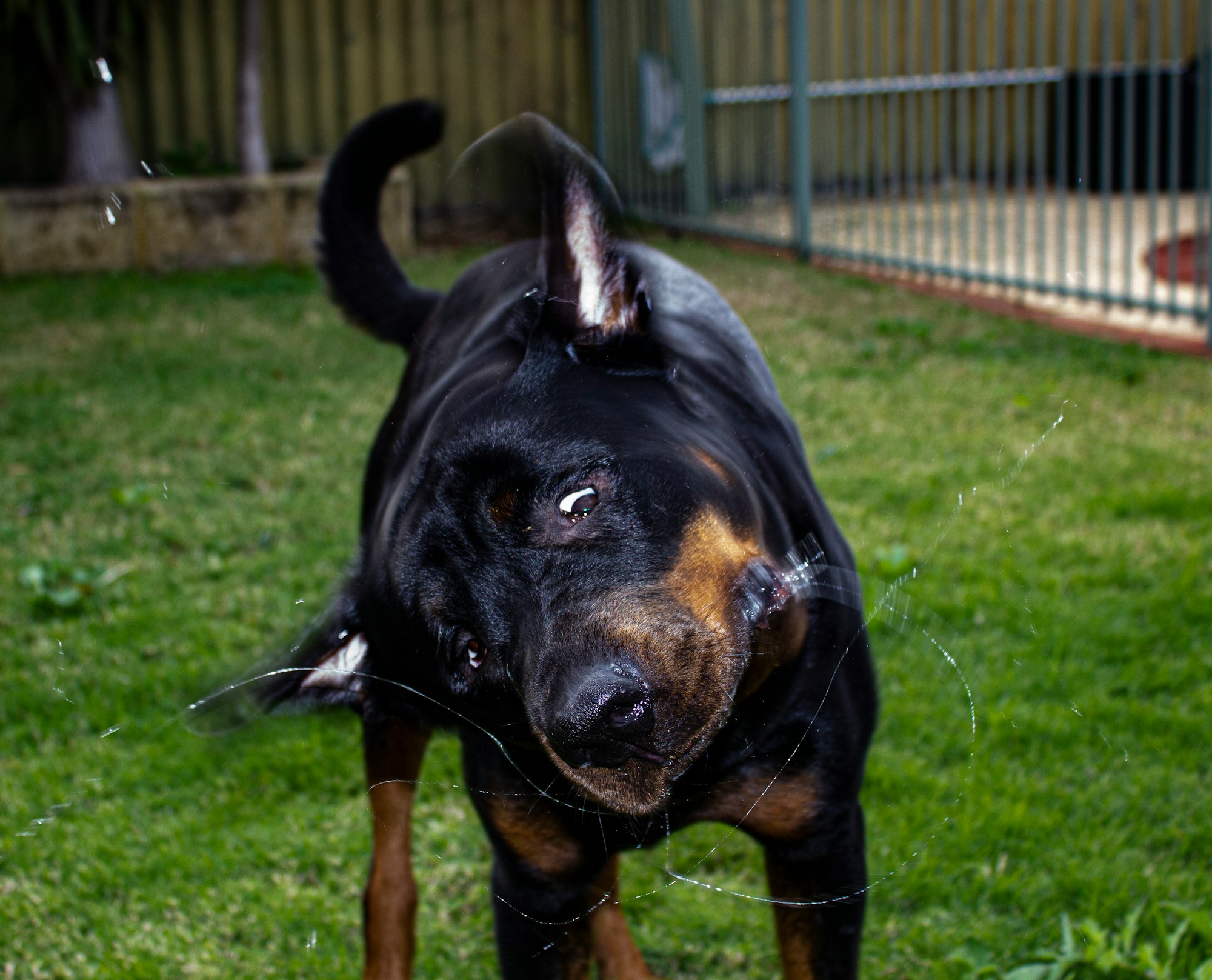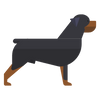How Much Does a Rottweiler Shed? (and What You Can Do)

When considering bringing a Rottweiler into your family, it's important to understand all aspects of their care, including their grooming needs. It is therefore natural to want to know how much a Rottweiler sheds. In this article, I will discuss the shedding habits of your Rottie and what you can do about it.
Rottweilers are moderate shedders due to their seasonal double coat, similar to a Labrador or German Shepherd. They shed all year, with peak shedding periods in the spring and fall. During this time, hair may build up in your home every 1-2 days, but brushing, bathing and a healthy diet can help.
Knowing what to expect when your Rottweiler sheds can help you prepare for the upkeep required to keep your home clean and your Rottweiler comfortable. Continue reading for a full understanding, as well as ways you can manage your Rottweiler's shedding coat.
Rottweiler Shedding: What to Expect
How Often does a Rottweiler Shed?
Rottweilers have a double coat, which is made up of a dense undercoat and a straight, coarse outer coat. This type of coat leads them to shed year-round, but they typically have two heavy shedding periods in the spring and fall. This is often referred to as "blowing their coats."
During these peak shedding seasons, you might notice a considerable increase in the amount of hair around your home. As Rottweiler hair is not hypoallergenic, this is something to consider if you have allergies or a sensitivity to dog hair.
How Much Hair does a Rottweiler Shed?
There are many factors that affect how much hair a Rottweiler will actually shed. However, Rottweilers are considered to be 'moderate' shedders. This is a similar amount of shedding to the following dog breeds:
- Labrador Retriever
- Siberian Husky
- Boxer
- German Shepherd
- Golden Retriever
- Border Collie
As a general guideline, during periods of normal shedding, vacuuming once or twice a week should suffice for most households. During peak shedding seasons, you might need to vacuum more frequently, potentially every day or every other day, to keep the pet hair under control.
For this reason, you might want to consider using a quality vacuum designed to pick up pet hair. These vacuums often have special attachments and features that make them more effective at collecting pet hair from various surfaces.
There are also a number of ways you can minimise shedding around the house, which you can read further down.
The Importance of Shedding thier Coat
As frustrating as it can be, shedding is a natural and important process for your Rottweiler. It is an essential part of maintaining the health of their coat and skin. Here are a few reasons why Rottweilers need to shed their coat:
- Seasonal Changes: Dogs shed to adjust to the changing seasons. During the warmer months, dogs shed their thicker winter coats to stay cool. As the cooler months approach, they shed their summer coat to make way for a thicker, warmer winter coat. This is why you might notice increased shedding in the spring and fall.
- Healthy Coat: Regular shedding helps to maintain a healthy coat by removing old and damaged hair. This allows new hair to grow in, keeping the coat in its best condition.
- Skin Health: Shedding also plays a role in skin health. The process helps to remove dead skin cells, reducing the chance of skin problems such as infections or irritations.
- Temperature Regulation: A dog's coat is a major factor in their ability to regulate body temperature. By shedding and regrowing their fur, dogs can effectively adapt to different temperatures and maintain a comfortable body heat.
While shedding is entirely normal, excessive shedding or bald spots may be a sign of underlying health issues. These could include allergies, parasites, or skin conditions. If you notice anything unusual about your Rottweiler's shedding patterns or their skin and coat's overall health, it's crucial to consult a vet.
So, while it might mean a bit more cleanup for you, shedding is a crucial part of your Rottweiler's overall health and well-being. Learning to manage it is key to having a happy home with your Rottie.
Individual Differences in Shedding
It's worth noting that every Rottweiler is unique, and shedding can vary between individual dogs. Factors such as their individual genetic makeup, age, and overall health status can affect the amount and frequency of shedding.
Old age, for example, will increase shedding due to a general decline in health. Common health problems, such as hypothyroidism or other metabolic disorders, can cause increased shedding, as can hormonal changes.
How to Manage Rottweiler Shedding
Brushing
While you can't stop a Rottweiler from shedding, you can effectively manage it with brushing. Regular brushing - about once or twice a week - is an integral part of this process.
Brushing doesn't just remove the loose fur; it also helps distribute the natural oils on your dog's skin, promoting a healthy and shiny coat. Using a slicker brush or a deshedding tool can be particularly effective.
The Role of Bathing
Aside from brushing, regular bathing can help manage your Rottweiler's shedding. Bathing helps to remove loose hair and keep the skin clean. However, over-bathing can lead to dry skin by stripping away the coat's natural oils.
Therefore, it's generally recommended to bathe a Rottweiler every 1-3 months, or more frequently during peak shedding seasons. Always remember to use dog-specific shampoos that are gentle on their skin. For more information on bathign your Rottie, click here.
Dietary Influences
A balanced diet is crucial for maintaining a healthy coat and reducing excessive shedding. Foods rich in omega-3 and omega-6 fatty acids can contribute to a healthier skin and coat.
A raw food diet, as is discussed in this article, is known to improve the health of your Rottweiler's coat. When in doubt, consult with your vet for the best dietary advice tailored to your Rottweiler's specific needs.

